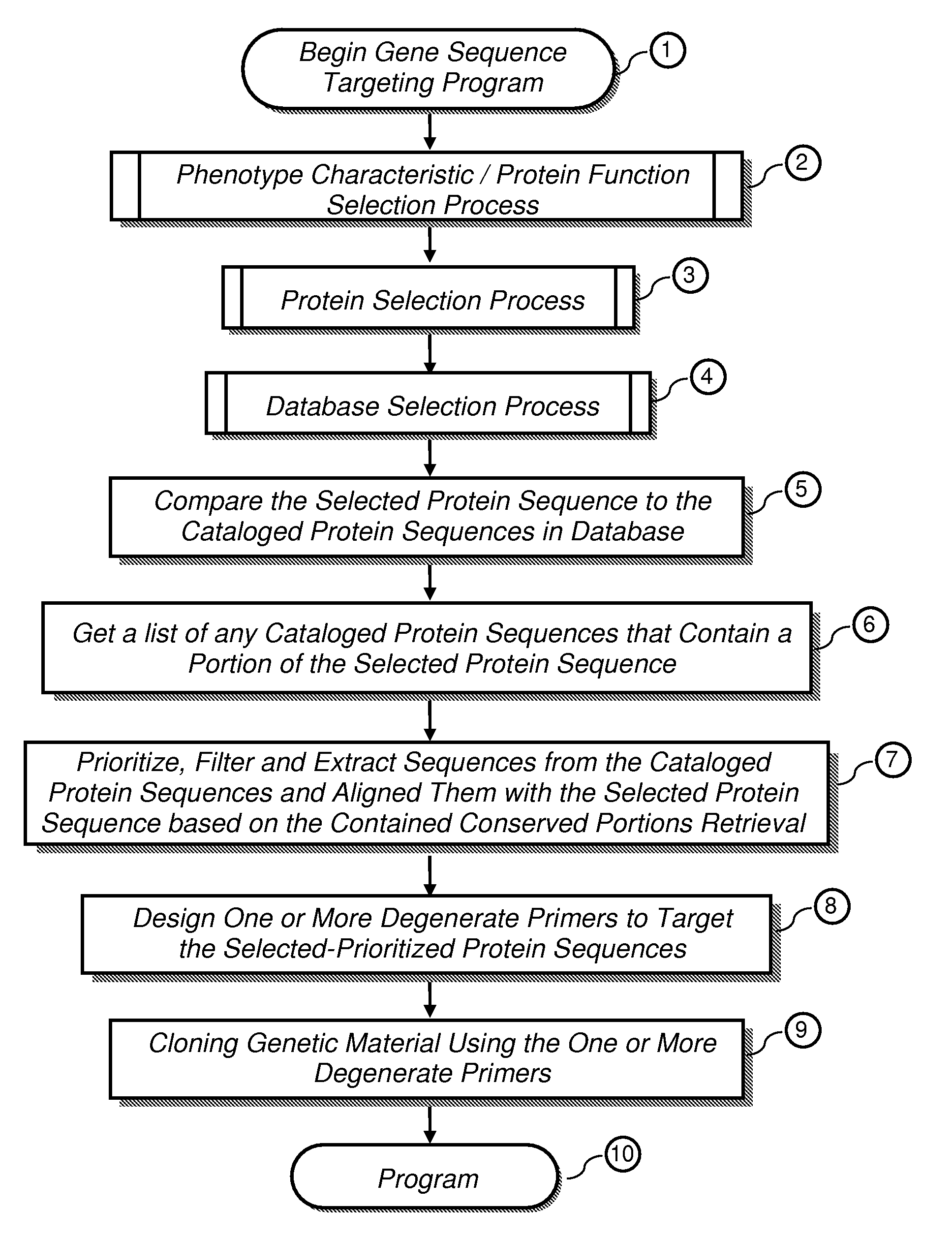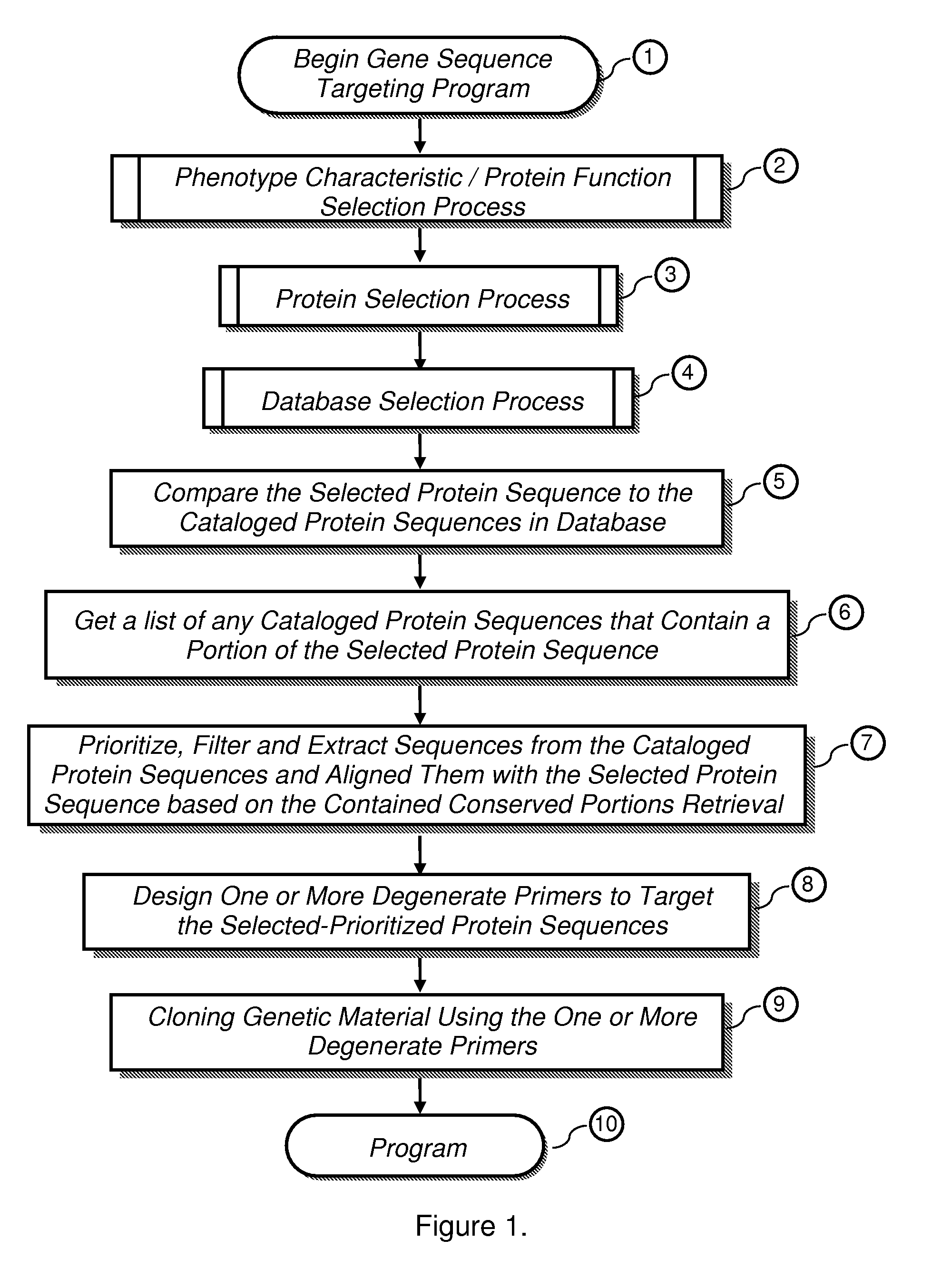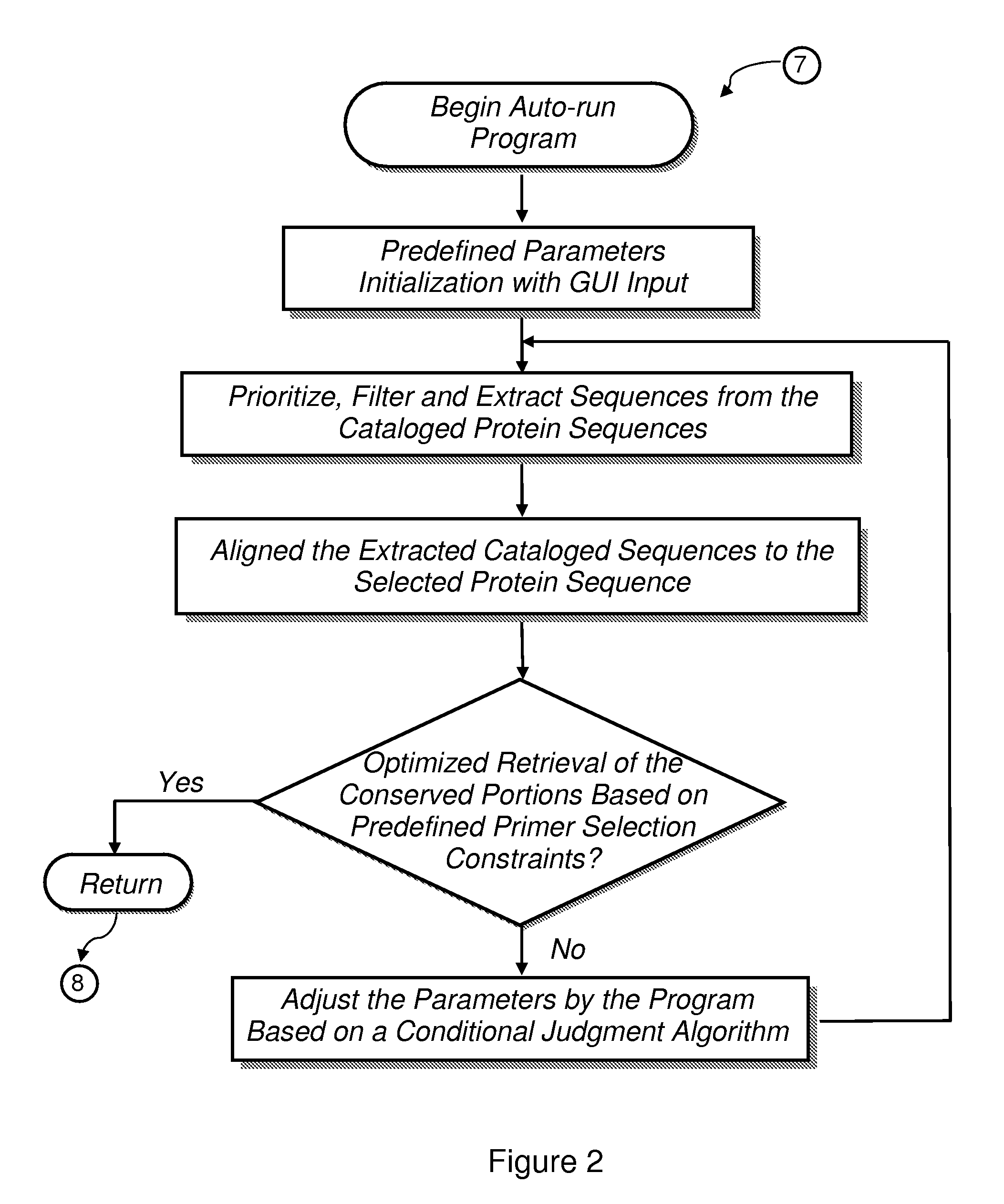Methods to design probes and primers
a technology of probes and primers, applied in the field of bioinformatics, can solve the problems that no other computer software program provides the capability of analyzing a vast array of complex, and achieve the effects of high throughput gene screening, enhanced gene mining, and high efficiency
- Summary
- Abstract
- Description
- Claims
- Application Information
AI Technical Summary
Benefits of technology
Problems solved by technology
Method used
Image
Examples
example 1
[0056]Algorithmic Approach for Selection of Conserved Sequence Block Retrieval
[0057]Exemplary periodical results generated by the algorithmic approach disclosed herewith is shown in Table 1. The methodology described is much more efficient than other conserved blocks finder techniques, e.g., BLOCKS maker, in that (i) it provides an automated approach for optimizing the retrieval of all possible highly conserved regions among sequence alignments inspected and (ii) it compensates for experimental constraints that otherwise would interfere with primer pair design.
[0058]Based on the three initialization values in Table 1 (Identities=30%, Positives=30%, Delta Length=30%), Cycle 1 extracted 15 cataloged sequences and aligned them to the selected protein sequence. Two conserved portions were obtained but neither one was valid for primer design (Table 1, Row 3, Columns 6-8). Consequently, the three primary parameters must be adjusted by the software program based on our conditional judgment...
example 2
Identification and Validation of Genes in Anopheles gambiae
[0059]The pipeline system SPADE™, implemented in Perl / CGI and several VB and Perl scripts, employed a BioPerl-based executable file, which ran as a typical CGI script on an Apache web server. Running the system required a standard Perl 5.8.7 installation, a few Comprehensive Perl Archive Network (CPAN) Perl modules, the BioPerl 1.4 set of modules and formatting to searchable local NCBI databases. A local standalone BLAST program, using BioPerl StandAloneBlast.pm (Perl Module), was computed to search against protein databases to quickly identify possible homologous sequences in all known species. The selected cataloged sequences were aligned using BioPerl ClustalW.pm to conduct the standalone multiple sequence alignment analysis. The public database nr.fas from NCBI was downloaded locally and updated routinely to facilitate virtual searches. The system enabled the identification, validation and cloning of a variety of genes ...
PUM
 Login to View More
Login to View More Abstract
Description
Claims
Application Information
 Login to View More
Login to View More - R&D
- Intellectual Property
- Life Sciences
- Materials
- Tech Scout
- Unparalleled Data Quality
- Higher Quality Content
- 60% Fewer Hallucinations
Browse by: Latest US Patents, China's latest patents, Technical Efficacy Thesaurus, Application Domain, Technology Topic, Popular Technical Reports.
© 2025 PatSnap. All rights reserved.Legal|Privacy policy|Modern Slavery Act Transparency Statement|Sitemap|About US| Contact US: help@patsnap.com



